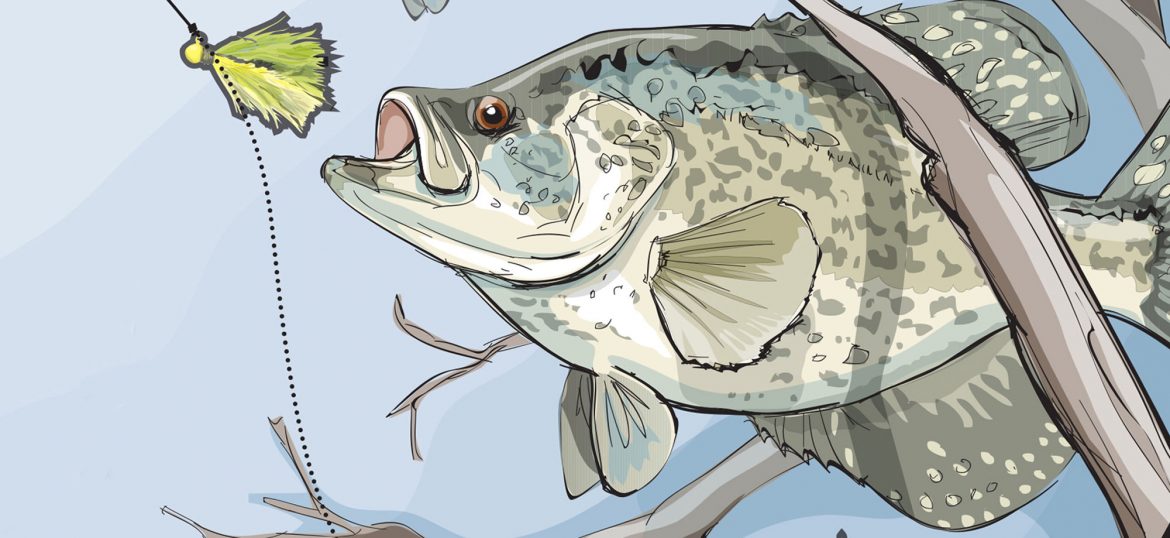
Panfish can be stubborn in early spring, and for that matter, so can synthetic jigs. In cold water, rubber and plastic have a tendency to stiffen, making it difficult to produce the subtle, lifelike wiggle that can make a lock-jawed perch, bluegill, or crappie chew. Natural materials like bucktail and feather, on the other hand, won’t lose their seductive action, even in the most frigid temperatures. Synthetic jigs excel at other times of year, but the pulse of marabou and flare of hair is hard to replicate, and going natural is your best bet for supplying the season’s first big fish fry with loads of fillets. These three tactics will get you hooked up real fast with the real thing.

[A] Buck Up
A 1⁄16-ounce bucktail jig is sparse enough to re-create the translucent profile of a tiny baitfish, such as a fathead, which yellow perch and other panfish dine on often. Unlike a live baitfish, a bucktail jig can be worked slowly in place, and the less a perch has to chase its prey, the more likely it is to attack.
[B] Get The Fix
During ice-out, perch flood into the shallows of lakes for their annual mating ritual, but fishing the rocky structure these fish love comes with plenty of snags. To avoid frequent retying, rig your bucktail jig under a fixed float to keep it hovering over the hard stuff and in the strike zone.
[C] Slow Your Roll
There’s no need to do anything more than move your jig at a snail’s pace. Early-spring panfishing is similar to ice fishing, and…





